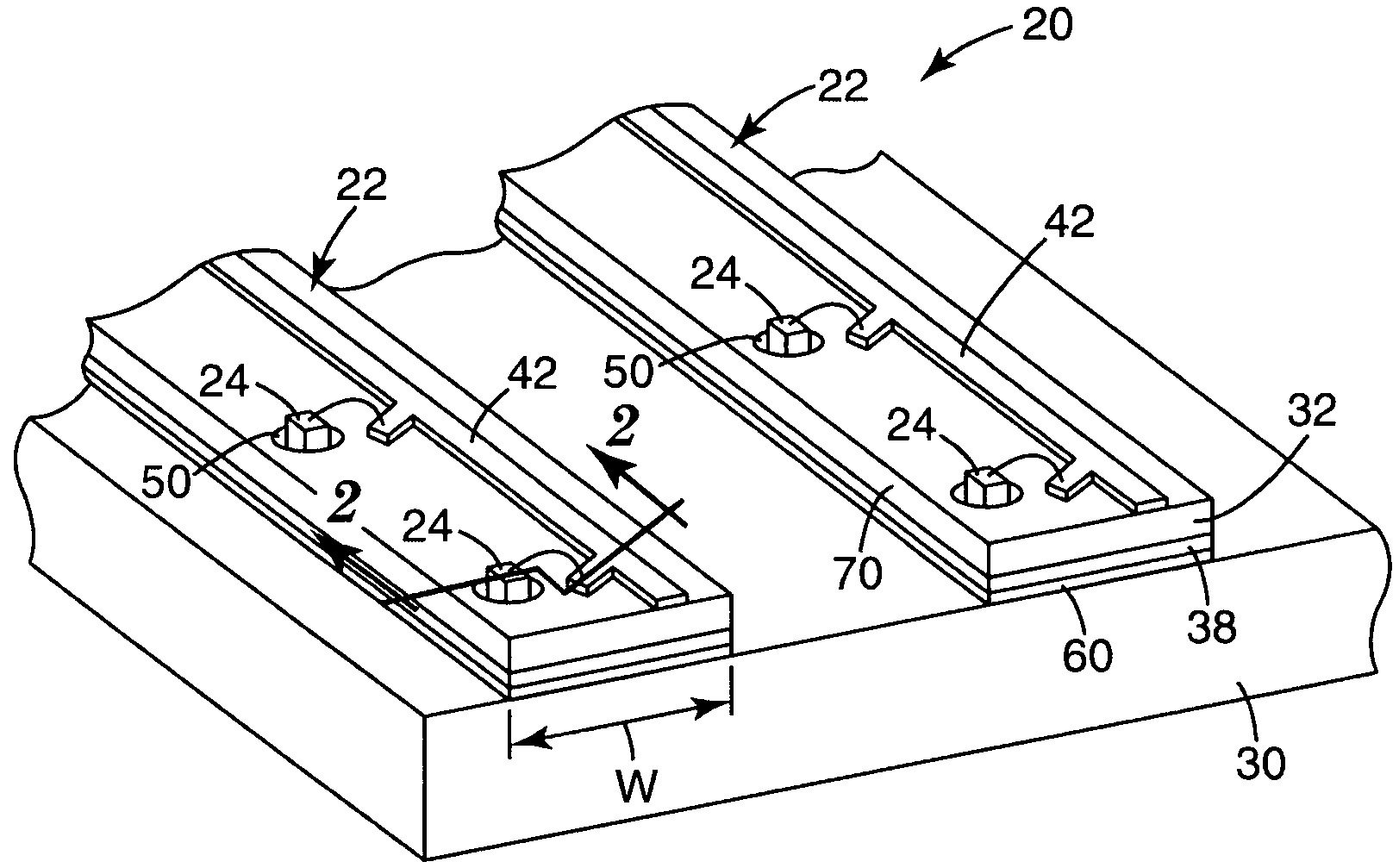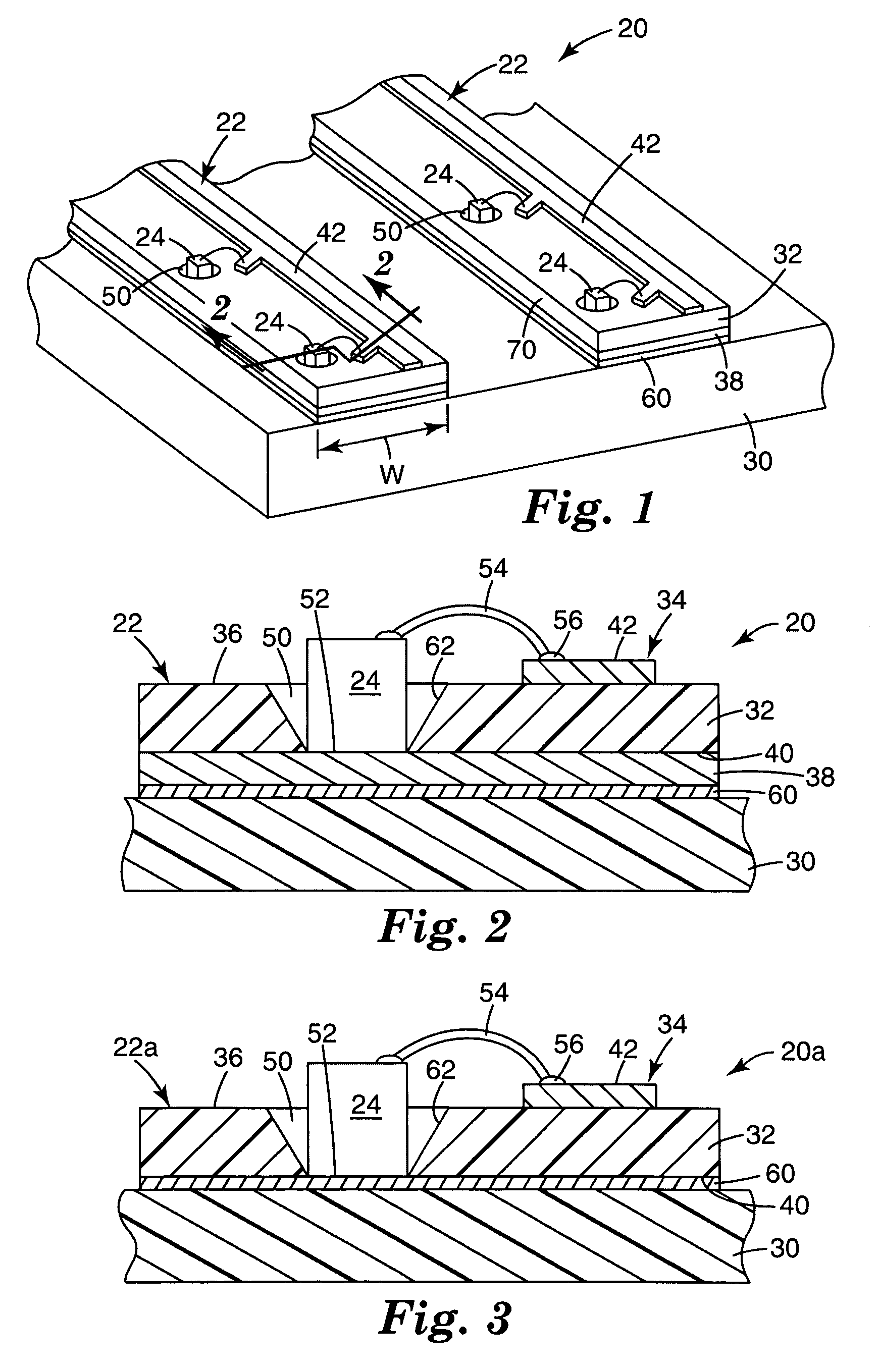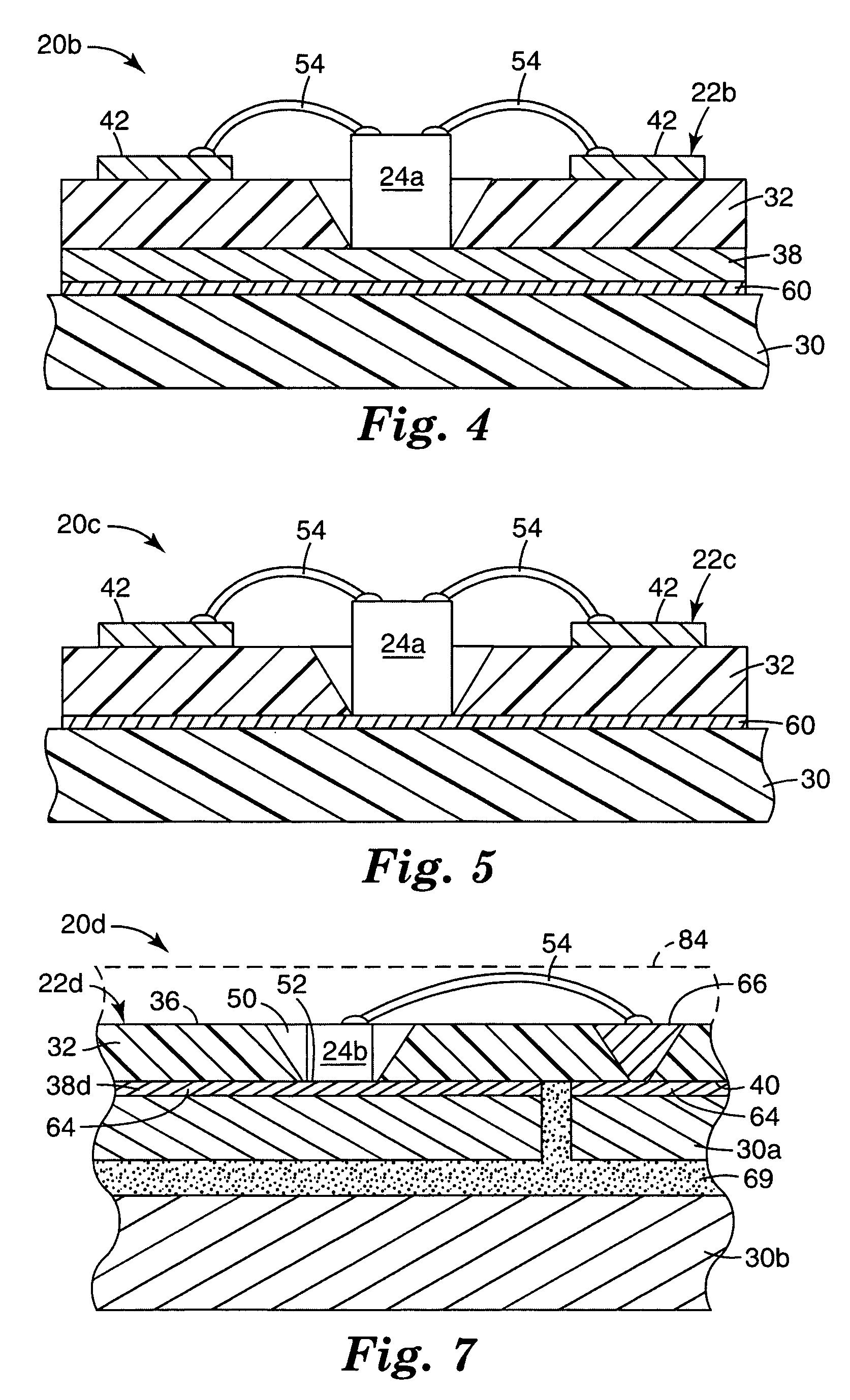Illumination assembly using circuitized strips
a technology of illumination assembly and circuitized strips, which is applied in the direction of semiconductor devices for light sources, lighting and heating apparatus, lighting support devices, etc., can solve the problems of difficult manufacturing or assembly, difficult to produce printed circuit boards, and difficult to meet the size and shape requirements of some display devices
- Summary
- Abstract
- Description
- Claims
- Application Information
AI Technical Summary
Benefits of technology
Problems solved by technology
Method used
Image
Examples
Embodiment Construction
[0017]In the following description, reference is made to the accompanying drawings. The reader will understand that other embodiments can be utilized and structural or logical changes may be made. The following detailed description, therefore, is not to be taken in a limiting sense, and the scope of the present invention is defined by the appended claims.
[0018]As used herein, the terms “LED” and “light emitting diode” are used to refer generally to light emitting semiconductor elements with contact areas for providing power to the diode. Different forms of inorganic semiconductor light emitting diodes may be formed, for example, from a combination of one or more Group III elements and of one or more Group V elements (III-V semiconductor). Examples of III-V semiconductor materials that can be used in an LED include nitrides, such as gallium nitride or indium gallium nitride, and phosphides, such as indium gallium phosphide. Other types of III-V materials can also be used, as can inor...
PUM
 Login to View More
Login to View More Abstract
Description
Claims
Application Information
 Login to View More
Login to View More - R&D
- Intellectual Property
- Life Sciences
- Materials
- Tech Scout
- Unparalleled Data Quality
- Higher Quality Content
- 60% Fewer Hallucinations
Browse by: Latest US Patents, China's latest patents, Technical Efficacy Thesaurus, Application Domain, Technology Topic, Popular Technical Reports.
© 2025 PatSnap. All rights reserved.Legal|Privacy policy|Modern Slavery Act Transparency Statement|Sitemap|About US| Contact US: help@patsnap.com



